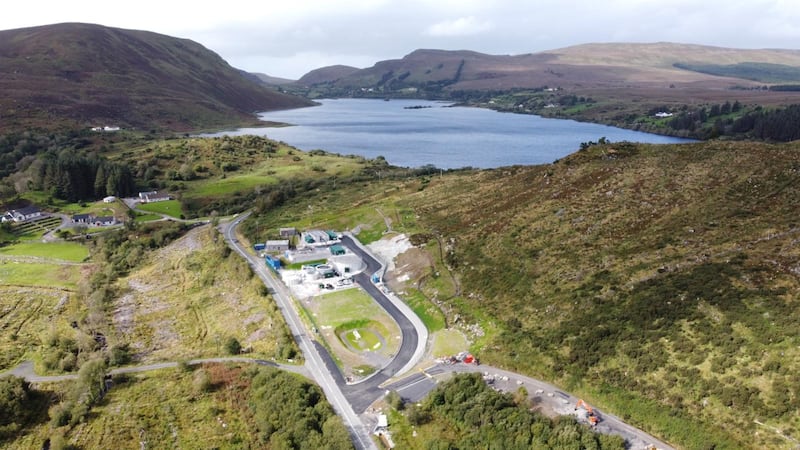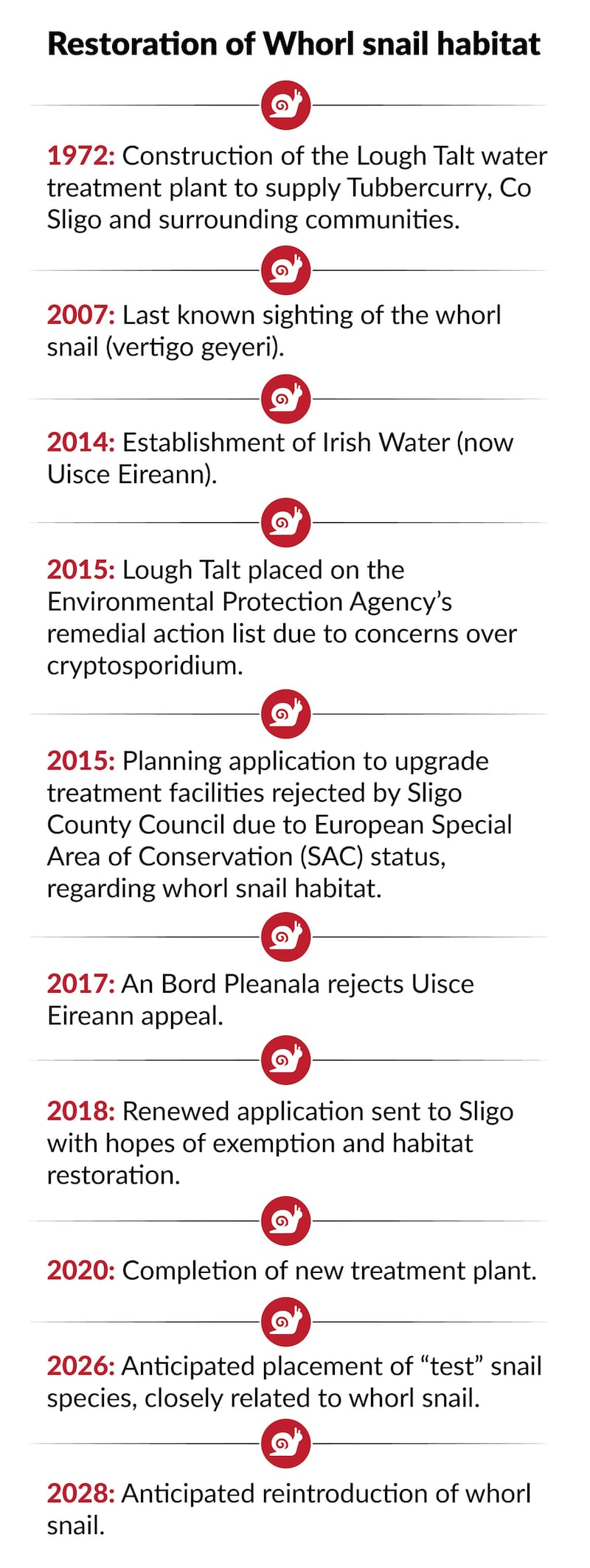Almost a decade after a tiny, unseen snail halted urgent public health works on a water treatment plant in the west of Ireland, Uisce Éireann is about to bring it back.
It could be described as snail’s pace conservation but Vertigo geyeri, more commonly the whorl snail, is likely to return to its natural habitat near Lough Talt in Co Sligo, two decades after it was last spotted.
Uisce Éireann (formerly Irish Water) has become its unlikely saviour. The state-owned company struck an unprecedented planning arrangement allowing its treatment plant to be upgraded in exchange for safeguarding the habitat and slowly reintroducing the species.
All going well, the whorl snail should be back in its natural habitat by early 2028 – 21 years after it was last sighted and 13 years after an initial planning application to upgrade the Lough Talt treatment plant was first rejected.
READ MORE
In 2015, the Environmental Protection Agency placed the Lough Talt plant on its remedial action list because it was not sufficiently protecting against cryptosporidium or carcinogenic trihalomethanes, both having the potential to cause serious risks to public health.
Three years later, the entire Tubbercurry area serviced by the plant, amounting to some 13,000 people, was placed on a boil water notice following the detection of cryptosporidium on routine testing.
“It was an extraordinarily bad public health situation because the cryptosporidium situation was going to be on repeat until the treatment plant was updated,” explained Olwyn James, senior planning manager at Uisce Éireann, who has been involved in continuing efforts to balance the needs of thousands of water customers against the need to preserve the habitat of the whorl snail.
Cryptosporidium is a tiny parasite found in human and animal waste which, if ingested, can cause fever, stomach upset and diarrhoea. In severe cases, it can cause dehydration and death.
It is not an uncommon threat. According to a 2021 study at the Technological University of Dublin, infections have been recorded in 58 per cent of electoral areas and in all 26 counties.

“When it’s a public health issue like that, that is an instant priority for an organisation like Irish Water,” explained Ms James.
Aware of the urgency, the utility applied for planning permission to Sligo County Council in 2015 to upgrade the Lough Talt facility but because it could not sufficiently demonstrate the works would not impact the whorl snail habitat, a European special area of conservation (SAC) at the adjoining Lough Hoe Bog, this was rejected, as was an appeal to An Bord Pleanála in 2017.
Separate analysis conducted by Uisce Éireann found the treatment plant would, in fact, cause drought conditions at the bog. For 95 days of the year, it would have to reduce water extraction by half in order to not pose a threat.
“Any fluctuation in the sogginess means the snail will die,” Ms James said. “The snail has been missing in action since 2007 but the conservation objective was to restore the habitat to make it a constant level of contentedness for the snail [so that] should the snail return, it would thrive.”
Hope eventually emerged in the form of an “imperative reasons of overriding public interest” clause that can assist a planning application with the promise of compensation measures. Given the urgent health concerns, and the fact an alternative public water source lay 30 to 40 kilometres away, this offered a potential solution but could only be decided by Sligo County Council.
“If we could bring the snail back, that would compensate for the snail being lost in the past. And then, we had to figure out a way to do that because it hasn’t been done before,” said Ms James.

With the help of mollusc expert Dr Evelyn Moorkens, a solution was designed that would see irrigation of the SAC area maintain suitable conditions, even with normal water extraction activity.
A revised planning application was granted. In 2020, Uisce Éireann began operating its upgraded treatment facility some five years after it first began attempting to address the problem.
Next year, a “test” snail closely related to Vertigo geyeri that is slightly more robust will be placed on site and monitored to see how it copes in the irrigated environment. Should that prove successful, as anticipated, the whorl snail population will be revived in its original home. Lough Talt is also to be replaced by another public water source.
A happy ending for the snail but possibly not the end of the story. With a shortage of the mollusc experts required to navigate similar conservation challenges, Uisce Éireann has now entered into a funding programme with Trinity College Dublin to produce more.
[ Almost 500,000 people being served by ‘at risk’ water supplies, EPA warnsOpens in new window ]
“There are other snails and other projects and it’s likely that this is going to happen [again].”











